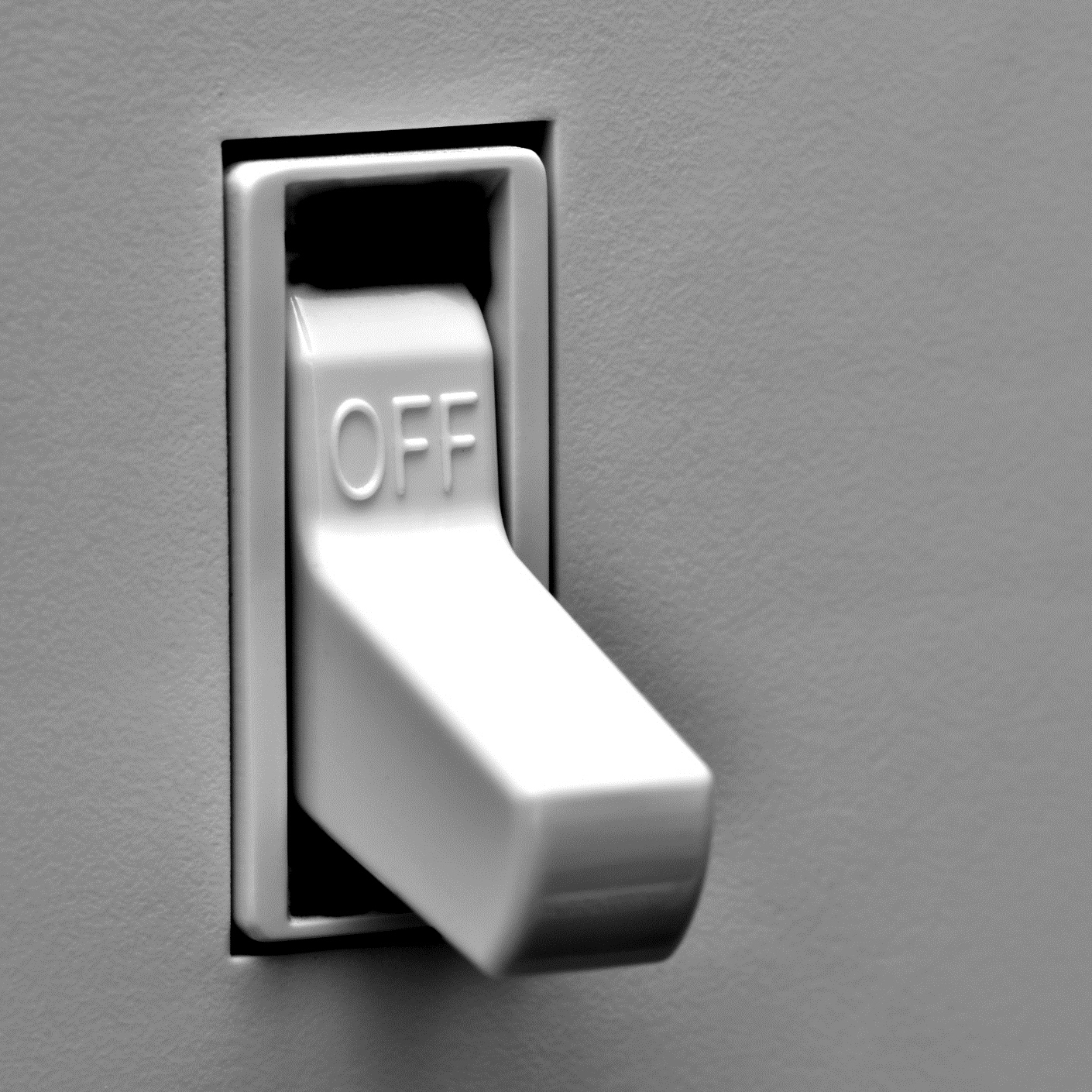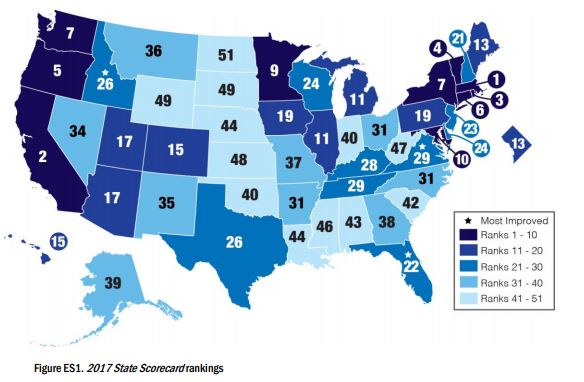
In 2016, U.S. utilities invested about $7.6 billion in energy efficiency programs and saved approximately 25.4 million megawatt-hours (MWh) of electricity. The U.S. Energy Information Administration (EIA) reported that in July of this year, the average cost of a kilowatt-hour in the United States was 13.12 cents, or $131.20 per MWh. That’s a savings of $3.33 billion.
Energy efficiency efforts vary among states, but in 2016 about half the states reported saving more as a result of energy efficiency programs than they did in 2015.
The American Council for an Energy-Efficient Economy (ACEEE) just published its annual “State Energy Efficiency Scorecard” that ranks the 50 states and the District of Columbia in six categories: utility programs, transportation, building energy codes, combined heat and power, state initiatives and appliance standards. Scores are assigned in a range of 1 to 50.
The 10 states with the highest (best) energy efficient scores last year were:
- Massachusetts: 44.5
- California: 42.0
- Rhode Island: 41.5
- Vermont: 39.0
- Oregon: 36.5
- Connecticut: 35.5
- New York: 34.5
- Washington: 34.5
- Minnesota: 33.0
- Maryland: 31.0
In only one state, Maryland, did the cost of a kilowatt hour fall in the period between July 2016 and July 2017.
The 10 states with the lowest energy efficiency scores were:
- North Dakota: 3.5
- Wyoming: 5.0
- South Dakota: 5.0
- Kansas: 6.0
- West Virginia: 6.5
- Mississippi: 7.5
- Nebraska: 8.5
- Louisiana: 8.5
- Alabama: 9.0
- South Carolina: 9.5
Only Nebraska showed a year-over-year decline in the price of a kilowatt-hour.
Here’s a map with scores for all 50 states and D.C.

The full ACEEE 2017 Scorecard is available at the organization’s website.
Are You Ahead, or Behind on Retirement? (sponsor)
If you’re one of the over 4 Million Americans set to retire this year, you may want to pay attention.
Finding a financial advisor who puts your interest first can be the difference between a rich retirement and barely getting by, and today it’s easier than ever. SmartAsset’s free tool matches you with up to three fiduciary financial advisors that serve your area in minutes. Each advisor has been carefully vetted, and must act in your best interests. Start your search now.
Don’t waste another minute; get started right here and help your retirement dreams become a retirement reality.
Thank you for reading! Have some feedback for us?
Contact the 24/7 Wall St. editorial team.




